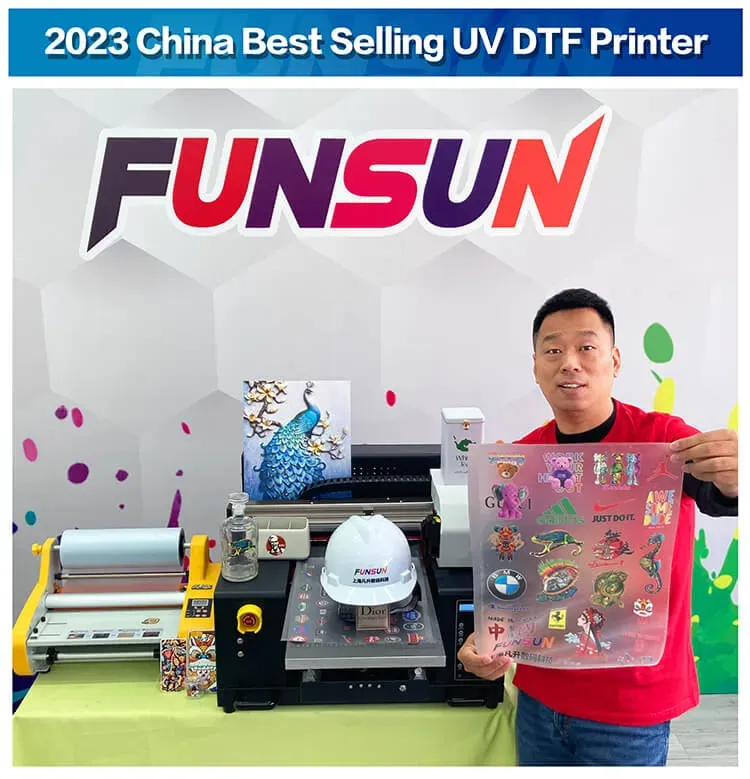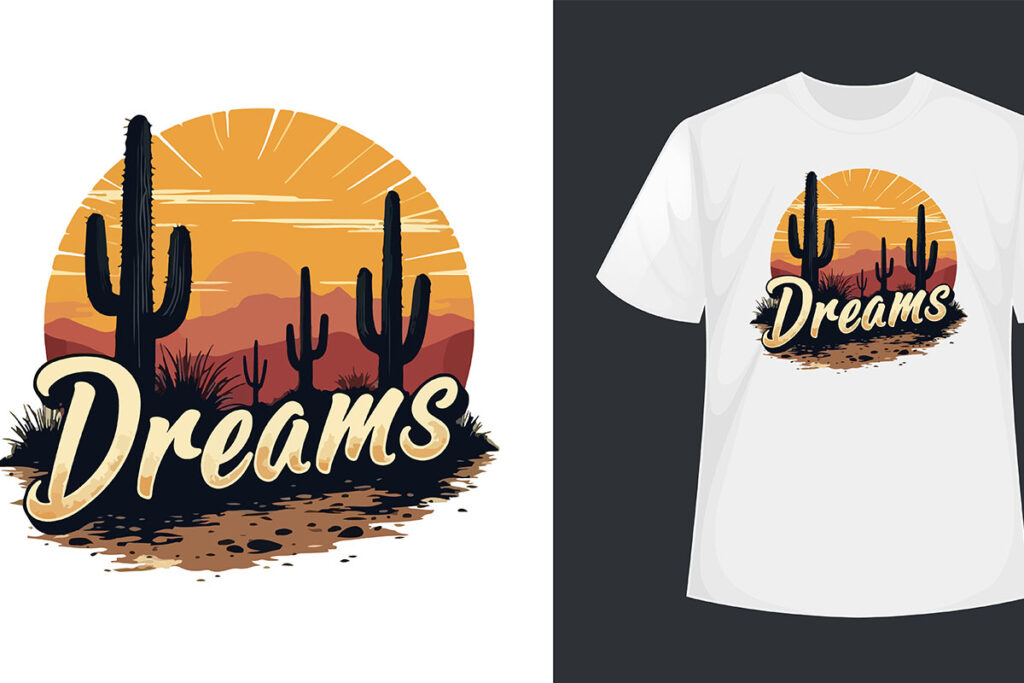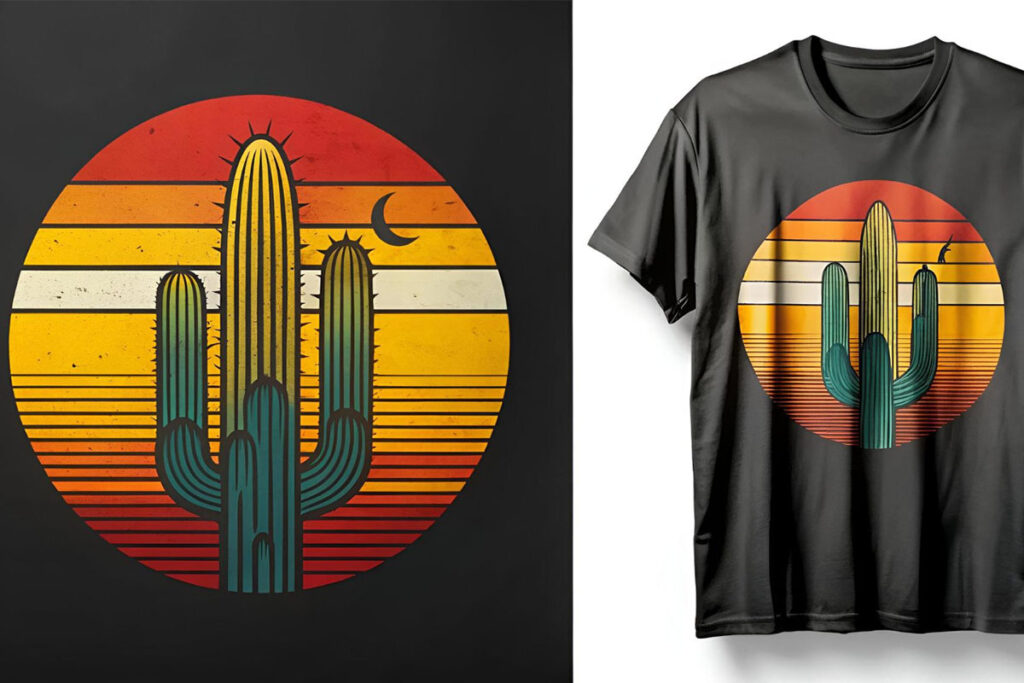**UV DTF printing** has emerged as a revolutionary technique in the world of modern printing, innovating the way vibrant designs are brought to life on various substrates. By combining traditional Direct to Film printing with cutting-edge UV technology, it offers unparalleled print durability and stunning color precision. As industries increasingly turn to **UV printing techniques** for their durability and quick turnaround times, it’s crucial to understand the advantages of this printing method. Businesses now have the opportunity to leverage the growing **printing technology trends**, providing exceptional quality that meets consumer demand for custom products. With UV DTF printing, creators can achieve eye-catching results, ensuring that their designs not only look great but also stand the test of time.
In the realm of graphic reproduction and custom product creation, the terms **UV Direct to Film printing** and **Direct to Film printing** often arise synonymous with innovation and quality. This advanced printing methodology utilizes ultraviolet light to enhance ink curing, resulting in durable and vibrant finishes. As the industry’s focus shifts towards print longevity and adaptability, many are discovering the exceptional benefits tied to this **UV DTF printing** approach. This method empowers designers and manufacturers by allowing prints to adhere effectively to varied materials, thus catering to an ever-evolving marketplace. With the increasing popularity of customizations, it’s vital for professionals to embrace the advantages these modern printing technologies have to offer.
Understanding the Mechanics of UV DTF Printing
UV Direct to Film (DTF) printing integrates the principles of traditional Direct to Film printing with advanced ultraviolet technology. This innovative process begins with the application of specially formulated UV-curable inks onto a film. Once printed, these inks are subjected to intense UV light, causing them to harden instantly. This unique curing mechanism allows the inks to bond quickly and effectively to a variety of substrates, producing high-definition prints known for their vibrancy and sharpness.
The mechanical process behind UV DTF printing not only enhances the aesthetics of your prints but also significantly improves operational efficiency. By eliminating the drying phase typically required in other printing methods, such as solvent-based or water-based techniques, UV DTF printing offers a rapid turnaround. This makes it especially appealing for businesses needing quick production times without sacrificing quality.
The Versatility of UV DTF Printing
One of the most compelling aspects of UV DTF printing is its versatility. This method allows for printing on a wide range of materials, including plastics, metals, wood, textiles, and more. Such flexibility means that businesses can expand their offerings, catering to different industries—from custom apparel and promotional products to dynamic signage and specialty items. The ability to print on diverse substrates opens up countless opportunities for creative applications.
Moreover, this wide applicability helps businesses tap into niche markets that may require specific materials or finishes. Whether you’re producing items for retail, corporate branding, or artistic endeavors, UV DTF printing can accommodate various needs, making it an invaluable option in the rapidly evolving world of printing technology. This adaptability is increasingly important as consumer demands shift toward personalization and uniqueness in products.
Advantages of Using UV DTF Printing Techniques
The advantages of UV DTF printing are substantial, particularly regarding durability and print quality. UV-curable inks are known for their exceptional resistance to scratches, fading, and general wear, which ensures that prints maintain their integrity over time. This characteristic is particularly beneficial for items that are exposed to the elements, like outdoor signs or apparel meant for active use. By choosing UV DTF printing, businesses can offer products that stand the test of time while also appealing to environmentally conscious consumers.
In addition to durability, UV DTF printing is also known for its vibrant color output. The immediate curing process not only enhances color richness but also sharpens detail, resulting in prints that are visually compelling. This technology allows for intricate designs and vivid imagery to be rendered accurately on various substrates, attracting customers looking for high-quality custom solutions.
Exploring Current Market Trends in UV DTF Printing
The adoption of UV DTF printing technology has seen a noticeable increase driven by several market trends. As e-commerce continues to flourish, the demand for custom and personalized print solutions has surged. Businesses that recognize this shift are increasingly investing in UV DTF printing to meet customer expectations for unique products. This trend suggests a promising future for establishments willing to embrace modern printing methods that cater to individual consumer preferences.
Moreover, advancements in UV printing technology are fostering new opportunities for innovation within the sector. As manufacturers continue to enhance the capabilities of UV DTF printers and inks, users benefit from greater possibilities regarding design and production efficiencies. Keeping abreast of these trends is essential for businesses looking to leverage UV DTF printing to maintain a competitive edge in the dynamic printing industry.
Essential Equipment for UV DTF Printing Success
Investing in the right equipment is crucial for anyone wanting to succeed in UV DTF printing. Selecting the appropriate printer is the first step; numerous manufacturers specialize in UV DTF printers that cater to diverse production needs. Brands like Roland and Epson stand out for their reliability and output quality. It’s essential to evaluate your specific requirements, considering factors like volume, color fidelity, and substrate types when choosing a printer.
In addition to the printer, the choice of ink is vital to achieving optimal results in UV DTF printing. Using high-quality UV inks ensures that the prints not only look great but also maintain durability, catering to the demands for long-lasting products. Regular maintenance of the equipment is equally important, as it prolongs the lifespan of the machinery and ensures consistent print quality. Scheduling routine checks can help identify potential issues before they escalate, preserving the integrity of your print outputs.
Tips for Mastering UV DTF Printing as a Beginner
For beginners, mastering UV DTF printing can seem daunting, but several essential tips can facilitate the learning process. Firstly, it’s advisable to experiment with different substrates to understand how each material interacts with the UV DTF printing process. Testing various surfaces allows you to identify the best options for specific applications and can lead to surprising discoveries about new uses for UV DTF technology.
Additionally, staying updated on recent advancements in printing technology is critical. The printing landscape evolves rapidly, and keeping abreast of the newest techniques and products will ensure that your skills remain relevant. Online forums and industry publications can provide invaluable insights and community support, helping you navigate the complexities of UV DTF printing and grow as a professional.
Frequently Asked Questions
What are the advantages of UV DTF printing compared to traditional printing methods?
UV DTF printing offers several advantages over traditional methods, including enhanced durability due to UV-curable inks that resist fading and scratching. The printing technology is also more efficient, as it eliminates drying time and allows for quick turnaround, making it ideal for businesses needing rapid production. Additionally, UV DTF printing is environmentally friendly, emitting fewer volatile organic compounds (VOCs) than traditional inks.
How does UV Direct to Film printing work?
UV Direct to Film printing involves applying UV-curable inks onto a special film, which is then cured instantly with UV light. This process ensures that the inks adhere quickly and provide vibrant colors and sharp details on various substrates, including plastics, metals, and textiles.
What types of substrates can be used with UV DTF printing?
One of the key advantages of UV DTF printing is its versatility. It can be applied to a wide range of substrates, including plastics, metals, wood, and textiles, making it suitable for multiple industries such as apparel manufacturing, signage, and promotional products.
Is UV DTF printing suitable for outdoor applications?
Yes, UV DTF printing is well-suited for outdoor applications due to the durability of UV-cured inks. These inks provide excellent resistance to scratching, fading, and general wear, ensuring that products maintain their quality and vibrancy even in challenging outdoor conditions.
What trends are currently shaping the UV printing technology market?
Current trends in UV printing technology include a rising demand for custom and short-run production, driven by the growth of e-commerce and consumer desire for personalized products. Innovations in UV DTF printers and inks are continuously evolving, offering new opportunities for businesses in the printing industry.
What equipment is essential for getting started with UV DTF printing?
To start UV DTF printing, you will need specialized UV DTF printers, high-quality UV inks, and films designed for this type of printing. Regular maintenance of equipment is also crucial to ensure optimal performance and consistent print quality.
| Key Aspect | Details |
|---|---|
| Definition | A printing technique combining Direct to Film with UV technology, allowing vibrant and durable prints. |
| Versatile Substrates | Can be used on plastics, metals, wood, and textiles, making it suitable for various industries. |
| Benefits | 1. Durability – Scratch and fade resistance. 2. Environmentally Friendly – Emits fewer VOCs. 3. Efficiency – No drying time needed. |
| Market Trends | Growing demand, particularly in e-commerce for custom and short-run production. |
| Learning Resources | Online tutorials, forums, and communities provide valuable information for beginners. |
| Equipment Considerations | Selection of high-quality printers, inks, and regular maintenance is essential. |
Summary
UV DTF printing is an innovative printing technology that revolutionizes how high-quality and durable prints are produced across various substrates. Ideal for businesses in apparel, signage, and promotional products, it combines the efficiency of instant UV curing with vibrant colors and longevity. As the demand for personalized and custom products continues to rise, understanding UV DTF printing techniques becomes essential for anyone looking to thrive in the digital printing landscape. With an in-depth knowledge of its applications, benefits, and equipment nuances, aspiring printers can maximize their potential in this exciting field.



